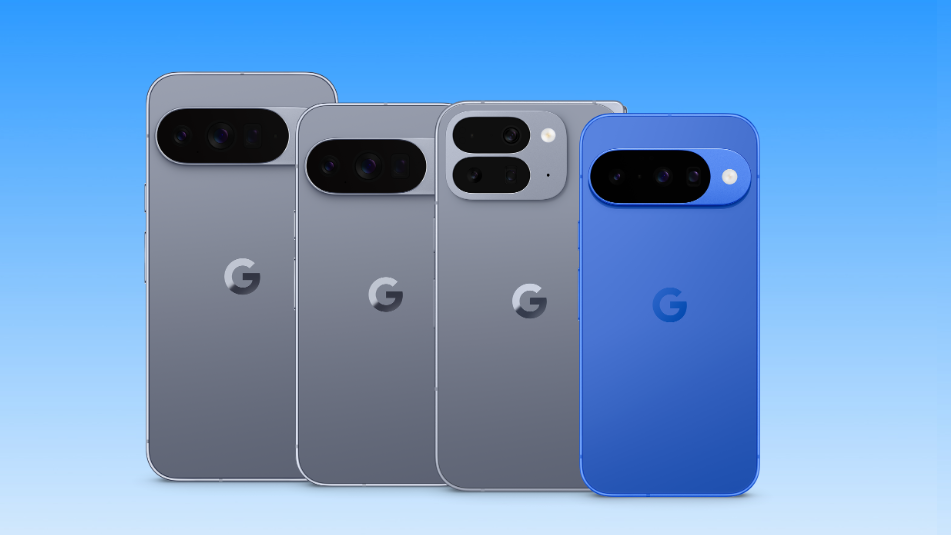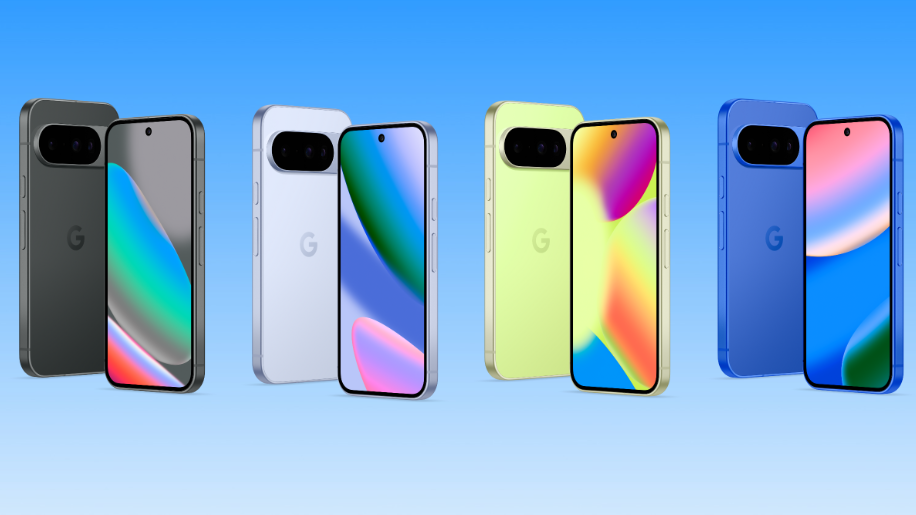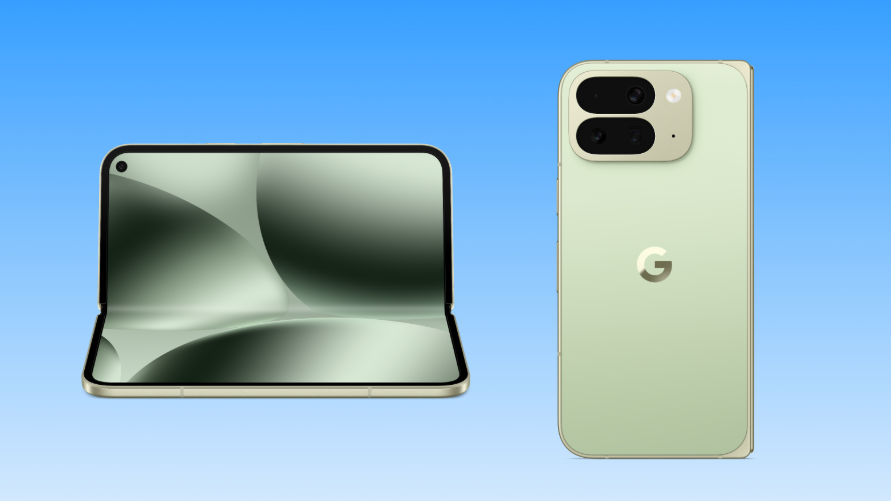You're forgiven if you thought the Pixel 10, Pixel 10 Pro/10 Pro XL, and Pixel 10 Pro Fold don't seem all that different from last year's devices.


The rumors and leaks can finally be laid to rest. Google has revealed the latest Pixel hardware ahead of its annual Made By Google event. The Pixel 10 lineup, which includes the Pixel 10, Pixel 10 Pro/Pro XL, and the Pixel 10 Pro Fold, doesn't look all that different from last year's releases. In fact, most of what's changed is a bit of a spec bump across the board. The real difference in this year's lineup is how much Google is pushing forward the AI of it all.
Although we didn't get hands-on time with the lineup of Pixel 10 smartphones before release, we do have all the details you need to know. That includes specifications and information on the new Pixelsnap, Google's version of Apple's longstanding MagSafe charging technology. We also got the scoop on several of the Pixel's new AI-enhanced software features, including Camera Coach and Voice Translate.

Now you can get a phone with optical zoom without paying over $1,000. The $800 Pixel 10 remains relatively unchanged in size from last year. Its biggest get, and perhaps the reason you'd upgrade from a Pixel 6/7/8, is its newly-added optical zoom. The Pixel 10's tertiary 10.8-MP telephoto camera can optically zoom in up to 5x, about as much as the past few generations of the Pro series.
The rest of the Pixel 10's camera also impresses at this price range. The Pixel 10 has a 48-MP primary camera with an aperture of f/1.7—it's just a teeny tiny more closed up compared to last year's Pixel 9, which offered a 50-MP primary camera with f/1.68. But anyway, Google wants you to trust in the magic of its algorithms. The primary camera sits next to a secondary 13-MP ultrawide camera sensor, also positioned next to the telephoto camera with optical zoom. The front camera is 10.5-MP, nearly the same as the Pixel 8 and 9's.
How about the rest of the Pixel 10? It has a 6.3-inch Actua display with a variable 60-120Hz refresh rate and 3,000 nits peak brightness. The size and weight remain relatively the same as the Pixel 9, though the battery capacity has gone up. It's now a 4,970mAh battery pack, up from 4,700mAh, with similar fast charging capabilities as before. The main difference this year is the combination of Qi2 and Pixelsnap wireless charging capability, which works up to 15W. The "Pixelsnap" is Google's equivalent of Apple's MagSafe, complete with a line of accessories and chargers. The inside hardware has also been updated with a Google Tensor G5 processor. It's coupled with 12GB of RAM and up to 256GB of storage.
The Pixel 10 costs $800 and is available for pre-order. It comes in four colors: Obsidian, Indigo, Frost, and Lemongrass.

The Pixel 10 Pro is the power-packed offering of the lineup. It comes in two sizes, the 6.3-inch Pixel 10 Pro and the 6.8-inch Pixel 10 Pro XL. Both devices feature Super Actua displays, offering slightly higher pixel density than the standard Pixel 10. These displays also offer a variable refresh rate between 1 and 120Hz, which is also how the Pro lineup enables the always-on display wallpapers.
Again, Google hasn't changed much in the size and weight of these devices relative to last year's Pixel 9 Pros. The battery sizes have gotten bigger, though. The Pixel 10 Pro sports a 4870mAh battery, up from 4700mAh, and the Pixel 10 Pro XL has a 5,200mAh battery, up from 5060mAh. The devices offer fast charging, too, though the Pro tops out at 55% with a 30-minute charge, while the 10 Pro XL can reach 70% capacity in half an hour. Both are equipped with the new Pixelsnap wireless charging mechanism, though only the Pixel 10 Pro XL works with Qi2.2. They are also disparate in wireless charging speeds, with the 10 Pro topping out at 15W and the Pro XL topping out at 25W.
Besides the requisite upgrades to the processor, the Pixel 10 Pro's internals remain mostly the same as last year's release. The Google Tensor G5 powers up the Pixel 10 Pro and Pixel 10 Pro XL, along with 16GB of RAM and up to 1TB of storage. You can get the Pixel 10 Pro with as little as 128GB if you want, though you'll be torturing yourself with such little storage space, especially if you plan to take high-res, super zoom photography like Google hopes you will
The Pixel 10 Pro is the smartphone I'm likely to upgrade to from my Pixel 9 Pro, but it's not because I have to. The camera system, besides the zoom, remains mostly the same between the two generations. The primary camera is a 50-MP wide-angle camera, the secondary camera is a 48-MP ultrawide, and the tertiary camera is a 48-MP with 5x optical telephoto abilities. The real kicker will be whether I want that 100x Pro Res Zoom that the Pixel 10 Pro/Pro XL lauds as one of its newest features. It is supposed to rival the Samsung Galaxy S25 Ultra's zoom-in capacity, though it mainly relies on Google's AI to do the sharpening rather than extra glass like Samsung does.
The Pixel 10 Pro starts at $1,000 for 256GB of RAM, and the Pixel 10 Pro XL starts at $1,200. Both devices come in four new colors: Obsidian, Moonstone, Porcelain, and Jade. There is no pink color this year.

This year's Pixel 10 lineup features a foldable, of course, though you won't see it for another few months. The Pixel 10 Pro Fold—say that in one breath—will ship in October rather than next week like the rest of the Pixel 10 family.
The Pixel 10 Pro Fold improves on everything its predecessor offered, albeit by a slight margin, though it's definitely an upgrade if you're coming from a first-generation Pixel Fold. Whereas last year's cover screen was 6.3 inches, this year's cover screen is a 6.4-inch Actua display. The inside display is an 8-inch Super Actua Flex display.
The height and weight remain mostly the same as last year's Pixel 9 Pro Fold, though this year the big kicker is the gearless hinge. Google says this new mechanism can withstand at least ten years of folding. With seven years of software updates promised, you could stick with it for that long, but you'll likely give up after about two or three years on the same device, as Google introduces new features. At the very least, if you decide to keep this in your arsenal of classic phones, it will probably still open 15 years from now. Maybe.
The cameras remain relatively the same. There's a 48-MP wide-angle camera, the same as last year, and a 10.5-MP ultra-wide camera. There's also a 10.8-MP Telephoto lens with 5X optical telephoto zoom, which is a nice-to-have. The Samsung Galaxy Z Fold 7 currently tops out at 3x optical zoom.
The Pixel 10 Pro Fold is truly the first thoroughly water-resistant foldable for Google. It's rated IP68 for all your environmental resistance needs. The battery life is also bigger at 5015mAh, up from 4650mAh. The Pixel 10 Pro Fold is also part of the Pixelsnap ecosystem, and it looks like a Nest Display when docked on the new magnetic Pixel stand.
If you're looking to buy the Pixel 10 Pro for its multitasking capabilities, you'll be set with the maximum 1TB storage offering available with this year's release. There's also a Google Tensor G5 processor and 16 GB of RAM, which should help facilitate all the Gemini wonder that Google wants you to partake in. It's worth noting that Samsung's foldable currently tops out at 12 gigs of RAM unless you get the 1TB version. This isn't a big deal, but if you do plan on engaging with Gemini and gaming, it's convenient to have that extra runway of RAM in the Pixel 10 Pro Fold.
The Pixel 10 Pro Fold starts at $1,800. It's less than the starting price of the Z Fold 7, which doesn't have the same telephoto capabilities, though you will have to wait another month and a half to ship. It comes in two colors: Moonstone and Jade.
The entire Pixel 10 lineup will come chock full of new Gemini-enhanced abilities, some of which should eventually make their way over to older Pixel devices for those who aren't quite ready to upgrade yet. It includes features like the new Daily Hub digest, which works similiar to Samsung's AI-powered Now Brief, and Camera Coach, which uses Gemini to help guide your photo to the best it can be. The Pixel 10 will also introduce Voice Translate, an AI translation feature that can mimic your voice in another language in real time.